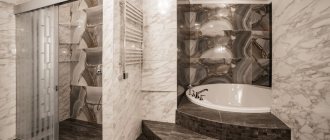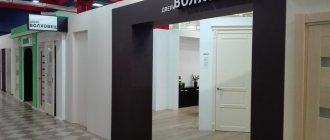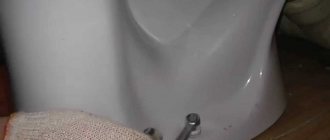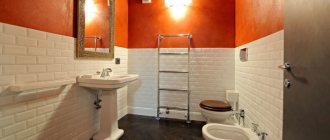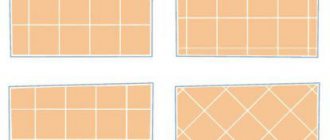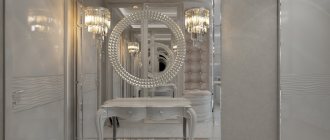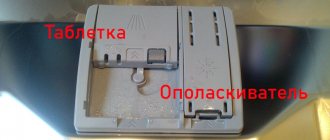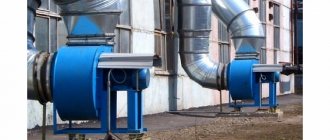Italon is a Russian-Italian brand of facing tiles, part of the Concorde group of companies. The production facilities of the enterprise are based in Stupino, where, since 2006, ceramic and porcelain stoneware finishes have been produced using innovative Italian equipment. Thanks to the use of advanced European technologies, manufacturers are able to achieve a wide variety of Italon product designs. The tiles presented in the brand’s assortment reproduce the appearance of a wide variety of materials: natural stone, wood, cement, textiles. To learn more about the operational and aesthetic features of Italian finishing, let’s get acquainted with popular collections and reviews about them.
Features and Benefits
Porcelain stoneware is a very durable facing material. It is used to decorate the interior and exterior surfaces of architectural buildings and for laying floors. Although the name of the product contains the insert “granite”, in fact it does not contain a single crumb of this stone, and all the same components are involved in the production as in the creation of ceramic tiles:
- Clay.
- Quartz sand.
- Kaolin.
- Feldspar.
In the process of making porcelain tiles, the prepared composition is pressed under a pressure of 500 kg/cm and fired at a temperature of about 1300 degrees (which is much higher than in the process of creating ceramic tiles). Thanks to such high temperatures, 100% fusion of all materials occurs, and the pressure eliminates the possibility of micropores forming in the finished product.
Colored pigments are not applied to the surface, but are added directly to the mixture, so porcelain stoneware retains its attractiveness even after many years of use and if its surface has been damaged by cracks or chips.
The list of advantages of “Ural porcelain stoneware” includes:
- Strength. Porcelain tiles are processed under high pressure, which increases their strength and increases their service life, which means that porcelain tiles are durable.
- Resistance to mechanical damage. The surface of porcelain stoneware is quite difficult to spoil. It has high impact strength, so it is not afraid of scratches and chips.
- Moisture resistance. The finished product has virtually no pores, so the slabs do not absorb moisture and also maintain their integrity under any conditions.
- Frost resistance. The manufacturer claims that its product can withstand temperatures from -50 to + 50 degrees, and sudden changes cannot destroy the structure of the slabs.
- Chemical resistance. Porcelain tiles are resistant to acids and alkalis. The high density of the product prevents stains from appearing in the upper layers of the material.
- Easy to care for. It is enough to wipe the material with a damp cloth.
- Wide color palette and variety of fact.
- Fire resistance. Porcelain tiles do not burn and do not support combustion.
- Safety. The product does not have a harmful effect on human health.
Stone cladding
Wonder – porcelain wall and floor tiles with imitation fine-grained sandstone. The collection includes matte basic monocolor products and decorative inserts in the form of a mosaic. The samples are decorated in deep shades of coffee, gray and brown.
Wonder
Charme - ceramics for walls and porcelain tiles for floors, repeating the texture of marble with characteristic veins of stone. Products are available with three types of surface: glossy, polished and embossed. The color palette includes five basic tones: white-gray, cream, beige, bronze and black. There are three types of samples in the collection:
- basic – monocolor;
- decorative - with geometric floral patterns;
- mosaic with square and rectangular elements.
Travertino is a porcelain stoneware floor and ceramic wall cladding that reproduces the look of travertine. Coatings can be patinated, polished and matte. The tiles are designed in soft shades of grey, dark beige and brown. Background tiles are monocolor, and decorative tiles have floral prints or contrasting stripes.
Travertino
Reviews:
- Tatiana. Charme. I chose glossy cream tiles from this series for the living room because the price suited me and the design pleasantly surprised me. The coating conveys the veining of marble very naturally. But after 3 months the gloss began to fade - they clearly saved on the quality of the top layer.
- Yana. Travertino. The kitchen floor has matte beige Travertino tiles. In its pure form it looks perfect and effectively conveys the look of natural marble. But there are a lot of problems with cleaning the floor: all the coloring liquids are absorbed into the material. To get rid of stains, you have to use a lot of cleaning products.
Scope of application of rectified porcelain stoneware
The use of edged porcelain tiles comes down to the formation of monolithic seamless surfaces when facing floors and walls. This installation looks impressive on large surfaces. In small rooms, installing small-format tiles end-to-end allows you to visually increase the space of the room and expand its boundaries.
Laying out porcelain tiles without seams requires high precision in tile dimensions. And the rectification process helps to achieve an ideal dimensional fit. In this case, you can use rectified material with any surface, combining all kinds of porcelain stoneware. This is due to the fact that when cutting material, manufacturers still adhere to certain standards.
A wide selection of material textures allows you to create the most daring projects in the field of interior and exterior design. This predetermined the high demand for rectified material, despite the high price segment of the finish.
It is permissible to use rectified material as a finishing material in all buildings where ordinary porcelain stoneware is used that is not trimmed after firing. This possibility is due to the preservation of its operational and technical properties even after the process of cutting edges on all sides.
User reviews
Oleg, 28 years old, Izhevsk
“I decided to start the bathroom renovation by selecting tiles. The budget was small, so I settled on VitrA Rock tiles. There were no problems with installation, since I bought all the elements accompanying the tiles at the store. The bathroom was immediately transformed, becoming comfortable and cozy. I’m very pleased with the choice and the result.”
Natalya, 42 years old, Ekaterinburg
“I wanted to create something exclusive in the kitchen, unlike anything else. The store advised me to look at VitrA Terra Nova tiles. The kitchen turned out to be in the style of a patchwork quilt. Very original and bright. I'm so happy! Now I don’t want to leave the kitchen. I think I’ll also pick up something from this company’s range for the bathroom.”
Svetlana, 33 years old, St. Petersburg
“I really love everything connected with hot Africa, so to decorate the bathroom I chose the Kenya collection from the Turkish company VitrA. The design turned out to be truly unique! I’m glad that manufacturers are concerned about customers with unusual tastes and preferences.”
Ivan, 41 years old, Moscow
“For tiling the bathroom I decided to choose tiles from VitrA (Woodstock series). The room looks very stylish, elegant and reliable. I think that the tiles will last for many years, since the manufacturer provides the buyer with a high guarantee.”
Porcelain tiles 600x600, 1200x600,
| Interior PORCELAIN TILES | Interior PORCELAIN TILES RECTIFIED | RECTIFIED, “GRANITEA” | "GRANITEA" | 600x300x10 | 600x600x10 | 1200x600x10 | ||||
| Matt Matt | Matt Matt | Lappated Lappato | Polished | Matt Matt | |||
| 1 | G202-Allaki Beige | Allaki Beige | 1082 | 1030 | — | 1285 | 1316* |
| 2 | G203-Allaki Gray | Allaki Gray | 1082 | 1030 | — | 1285 | 1316* |
| 3 | G212-Arkaim Beige | Arkaim Beige | — | 1030 | — | — | 1316* |
| 4 | G213-Arkaim Gray | Arkaim Gray | — | 1030 | — | — | 1316* |
| 5 | G214-Arkaim Brown | Arkaim Brown | — | 1030 | — | — | 1316* |
| 6 | G215-Arkaim Black | Arkaim Black | — | 1030 | — | — | 1316* |
| 7 | G222-Iremel Beige | Iremel Beige | — | 1030 | 1180* | — | 1316* |
| 8 | G223-Iremel Gray | Iremel Gray | — | 1030 | 1180* | — | 1316* |
| 9 | G224-Iremel Brown | Iremel Brown | — | 1030 | 1180* | — | 1316* |
| 10 | G225-Iremel Black | Iremel Black | — | 1030 | 1180* | — | 1316* |
| 11 | G231-Iset Elegant | Iset Elegant | 1082 | 1030 | — | 1285 | 1316* |
| 12 | G243-Kirety Gray | Kirety Gray | — | 1030 | — | 1750 | 1316* |
| 13 | G244-Kirety Brown | Kirets Brown | — | 1030 | — | 1750 | 1316* |
| 14 | G245-Kirety Black | Kirety Black | — | 1030 | — | 1750 | 1316* |
| 15 | G246-Kirety Green | Kirety Green | — | 1030 | — | 1750 | 1316* |
| 16 | G253-Koiva Gray | Koiva Gray | 1082 | 1030 | — | 1750 | 1316* |
| 17 | G261-Kondjak Elegant | Konjac Elegant | 1082 | 1030 | — | 1285 | 1316* |
| 18 | G263-Kondjak Gray | Konjac Gray | 1082 | 1030 | — | — | 1316* |
| 19 | G265-Kondjak Black | Konjac Black | 1082 | 1030 | — | — | 1316* |
| 20 | G270-Kukazar White | Kukazar Bely | — | 1030 | — | 1285 | 1316* |
| 21 | G272-Kukazar Beige | Kukazar Beige | — | 1030 | — | 1285 | 1316* |
| 22 | G281-Payer Elegant | Payer Elegant | — | 1030 | — | 1285 | 1316* |
| 23 | G282-Payer Beige | Payer Beige | — | 1030 | — | 1285 | 1316* |
| 24 | G283-Payer Gray | Payer Gray | — | 1030 | — | 1285 | 1316* |
| 25 | G285-Payer Black | Payer Black | 1082 | 1030 | — | 1750 | 1316* |
| 26 | G292-Shikhan Beige | Shihan Beige | — | 1030 | 1180* | — | 1316* |
| 27 | G302-Shunut Beige | Shunut Beige | — | 1030 | — | 1285 | 1316* |
| 28 | G304-Shunut Brown | Shunut Brown | — | 1030 | — | 1285 | 1316* |
| 29 | G311-Sinara Elegant | Sinara Elegant | 1082 | 1030 | — | 1285 | 1316* |
| 30 | G312-Sinara Beige | Sinara Beige | 1082 | 1030 | — | 1285 | 1316* |
| 31 | G314-Sinara Brown | Sinara Brown | 1082 | 1030 | — | 1285 | 1316* |
| 32 | G315-Sinara Black | Sinara Black | 1082 | 1030 | — | 1750 | 1316* |
| 33 | G316-Sinara Green | Sinara Green | 1082 | 1030 | — | 1750 | 1316* |
| 34 | G317-Sinara Bronze | Sinara Bronze | 1082 | 1030 | — | 1750 | 1316* |
| 35 | G322-Sugomak Beige | Sugomak Beige | 1082 | 1030 | — | 1285 | 1316* |
| 36 | G324-Sugomak Brown | Sugomak Brown | 1082 | 1030 | — | 1285 | 1316* |
| 37 | G327-Sugomak Bronze | Sugomak Bronze | 1082 | 1030 | — | 1750 | 1316* |
| 38 | G330-Sungul White | Sungul White | 1082 | 1030 | — | — | 1316* |
| 39 | G332-Sungul Beige | Sungul Beige | 1082 | 1030 | — | — | 1316* |
| 40 | G340-Taganay White | Taganay Bely | 1082 | 1030 | — | 1285 | 1316* |
| 41 | G341-Taganay Elegant | Taganay Elegant | 1082 | 1030 | — | — | 1316* |
| 42 | G343-Taganay Gray | Taganay Gray | 1082 | 1030 | — | — | 1316* |
| 43 | G345-Taganay Black | Taganay Black | 1082 | 1030 | — | — | 1316* |
| 44 | G351-Turgoyak Elegant | Turgoyak Elegant | 1082 | 1030 | 1180* | — | 1316* |
| 45 | G353-Turgoyak Gray | Turgoyak Gray | 1082 | 1030 | 1180* | — | 1316* |
| 46 | G362-Uvildy Beige | Uvildy Beige | 1082 | 1030 | — | 1285 | 1316* |
| 47 | G363-Uvildy Gray | Uvildy Gray | 1082 | 1030 | — | 1285 | 1316* |
| 48 | G371-Yurma Elegant | Yurma Elegant | 1082 | 1030 | 1180* | 1285 | 1316* |
| 49 | G385-Karatash Black | Karatash Black | 1082 | 1030 | — | 1750 | 1316* |
| 50 | G388-Karatash Green-Black | Karatash Black-Green | 1082 | 1030 | — | 1750 | 1316* |
| 51 | G389-Karatash Blue-Black | Karatash Black-Blue | 1082 | 1030 | — | 1750 | 1316* |
Selling prices are indicated for 1 sq.m., in Russian rubles (including VAT). Republic of Crimea: +50 rub./m2. Vladivostok, Blagoveshchensk: +65 rub./m2. Khabarovsk +105 rub./sq.m. * To order
| Tile adhesive “Ural Formula” | ||
| Name | Unit change | Price |
| UP-300-600 FLOORS | bag | 313 |
| USP-300-1200 WALLS + FLOORS | bag | 362 |
| SVP – Tile Leveling System | ||||
| Name | Unit change | Clamp, pcs. | Wedge, pcs. | Price |
| SVP 250 sets | box | 250 | 250 | 1100 |
| SVP 900 clamps | box | 900 | — | 1400 |
For advice on the range and assistance in placing an order, please call.
Types of porcelain tiles
Despite its small age, porcelain tiles are steadily gaining popularity. It successfully imitates natural stone, and in terms of performance it is in no way inferior to natural material. In many ways he surpassed him. There are different types of porcelain stoneware, which differ in structure and surface character.
Sanded – the surface is matte, rough to the touch. During production, it is processed with diamond-coated discs.
Matt (unpolished) – after firing the substrate, the surface is not further processed. This type of product does not have shine, but is characterized by the highest technical properties and low cost.
Satin (polished) - this ceramic granite has a slight waxy sheen. This effect is achieved by using a layer of mineral acids and salts applied to the tile surface before firing. This does not affect the structural properties in any way, and the characteristics are similar to matte, only the price is 1/3 higher.
Mirror - the surface is processed not only by grinding, but also by polishing.
Glazed - this is how porcelain stoneware becomes due to the glaze that is applied to the clay piece before firing.
Semi-polished - all irregularities are cut off from the front surface of the tile, and after this a strange effect is obtained - a combination of a polished surface with matte areas.
Structured - porcelain tiles with a relief surface that imitates all kinds of materials: wood, raw stone, fabric, leather, etc.
There are also rustic (artificially aged) and mosaic types of ceramic granite, which add special creativity and charm to the building.
Unglazed (technical, natural) - this type of porcelain tile has a completely homogeneous structure and a matte surface. Its advantage is that its color remains unchanged if its surface is worn or damaged. The texture of unglazed porcelain tiles also provides slip resistance.
Dimensions and thickness
Manufacturers produce porcelain stoneware slabs of various sizes - from min 50X50 to max 1200X3600 mm. The most commonly used are: 300X600 and 600X900 mm. They are brought into compliance with the standard parameters of window openings, the multiplicity of which (according to building codes) is 300 mm.
This avoids wastage of facing material due to scraps and simplifies the installation process. According to generally accepted standards, the thickness of the material ranges from 6 to 13 mm.
Quality above all
According to reviews, Ural porcelain tiles in terms of characteristics and aesthetic perception correspond to the best world analogues. Today, the production and quality control of ceramic products is carried out using modern equipment from Italian companies: Sacmi, BMR, System, ICF, which is confirmed by certificates. In addition, there is a constantly functioning laboratory, which is equipped with the latest European technology. These are multifunctional complexes: GABBRIELLI, Ceramic Instruments, ASSO Print.
The main advantages of porcelain stoneware
The advantages of porcelain stoneware are due to its properties obtained during the production process:
- Strength and durability. Porcelain tiles are processed using higher pressure. For this reason, its strength increases and its service life increases compared to conventional ceramic tiles.
- Resistance to mechanical damage. The material is resistant to scratches and chips, it has high impact strength and bending strength.
- Moisture resistance. Since the initial composition is practically devoid of pores, the finished material does not absorb moisture, which allows the material to remain intact even in the event of severe frosts.
- High frost resistance. According to manufacturers, the material can withstand temperatures from -50 to +50 and is not destroyed by sudden temperature changes. Porcelain stoneware tiles are used for cladding buildings and constructing steps.
- Chemical resistance. Porcelain tiles are not affected by acids and alkalis. Its high density prevents stains from appearing on the surface of the material.
- Easy to care for. The material does not require increased care. Wiping with a simple damp cloth from time to time will be enough.
- Rich palette of colors and textures. The assortment is very large, you can choose any color and texture, imitation of wood and stone, leather and fabric, which allows you to implement the most daring design solutions for any interior.
- Fire resistance. Does not burn and does not support combustion.
- Environmental friendliness. Has no harmful effects on health or the environment.
Advantages and disadvantages of porcelain stoneware finishing
By analogy with human clothing, lining performs the same function. Like clothing, cladding materials come in a wide range. In this regard, porcelain stoneware is an excellent option for beautiful, fashionable and high-quality “clothing” for buildings for various purposes.
Advantages of ceramic granite
- Reliable protection of facades from corrosive destruction. This is due to the unique qualities of the material: strength, resistance to significant temperature changes, inertness to aggressive substances, stability in wet conditions.
- Variety of choice. Since porcelain stoneware is an artificial stone that is made in factories, it has various shapes, sizes, colors and textures. This makes it possible to give the building any, even the most creative, desired appearance.
- Reducing financial costs for building maintenance. Despite the fact that the price of porcelain stoneware is high, facade finishing with such material will save you from all kinds of expenses in the future (repairs, finishing, etc.).
- Creating comfortable conditions for staying inside the building.
- The possibility of radically changing the appearance of buildings, since the tiles have enviable aesthetic characteristics.
- Auxiliary external protection.
- Dirt-repellent properties.
You can list the advantages of this material for a long time, describing its fire resistance, sound insulation, durability, ease of cleaning from dirt, etc. Taken together, all of them allow us to consider porcelain stoneware as a worthy option for protecting and finishing facades.
Flaws
- High cost - the cost of façade cladding with porcelain stoneware is quite high.
- Relative fragility - during transportation, installation work and operation, quite a large amount of material splits and cracks.
- Significant weight - this property complicates the delivery of the material and work on its fastening. Also, additional strengthening of the foundation is often required, since the tiles significantly add load to it.
Facade cladding using Estima porcelain stoneware
Many builders consider Estima porcelain stoneware to be the most effective facing material, and this is no coincidence. This façade will last for more than half a century without additional special care. It is not afraid of shocks, wind, precipitation, or frost. Under it you can hide uneven walls and unsightly communications. Porcelain tiles are an excellent sound insulating material. It is easy to attach even alone and is inexpensive.
It is usually used for arranging ventilated facades. The plates themselves are equipped with special fasteners, or are mounted on clamps, which press and hold the facade parts in the right place. A ventilated façade involves the construction of lathing, and this type of finishing requires a metal frame. Insulation and membrane wind protection are laid under it.
Diagram of a ventilated façade with a porcelain stoneware shell
Between the outer cladding and the inner insulating layer there is a free air corridor, thanks to which the outer walls are ventilated. The porcelain stoneware shell of a ventilated façade is not flammable, which is very important during its operation, since fire will not be able to spread along the shell. Presentable appearance and cost ratio will allow you to cladding a building of any size.
The photo shows a diagram of the design of a ventilated façade with porcelain stoneware slabs. Estima slabs are fully suitable for this, as they have high technical performance, which is necessary for such work.
Characteristics of very high quality Ural porcelain granite
Its special characteristics are emphasized, among them it should be noted:
- Eco-friendly cleanliness. In addition to the fact that the environmental safety of the material itself is carefully examined, the production process does not involve mixing it with various additives. Eco-friendly and does not pose a threat to the external environment, does not pollute it and does not cause allergic reactions. All this allows you to change the areas of use of Snezhinsky products: from the construction of a foundation to a variety of finishing works.
- Good working qualities. Ural ceramic granite absolutely meets the specified properties. Moreover, it is resistant to various negative influences, for example, extreme temperatures. When heated, it does not emit any substances hazardous to human health.
- Heterogeneous selection of tiles. Of course, it has become a favorite material for most designers. The production of ceramic granite is based on current technological equipment using only the highest quality foreign dyes.
Ural ceramic granite
The “Superceramic” colorimetric system, which is equipped in the production laboratory, provides the highest color palette. A rich palette of colors is used in various modern solutions from designers; it can become a wonderful decoration for different interiors and exteriors.
Working qualities
Ural ceramic granite is known not only for its colorful palette, but also for its variety of textures:
- this includes a mirror-smooth surface, an imitation of unfinished stone, and much more;
- cladding, which became for the decorator a tool for realizing his most interesting and intricate fantasies.
Even its most utilitarian use to disguise a variety of imperfections on a variety of surfaces looks personal and stylish.
Among the working properties and positive qualities of ceramic granite, which ensure its demand, we can emphasize:
- coating with a special layer that protects the surface from dirt;
- color stability;
- non-flammability;
- stains do not appear on the tiled surface during use;
- moisture absorption – 0.05% or less;
- resistance to the influence of a wide variety of mildly aggressive environments.
The first rectified product in the 1200x600 format in the Russian Federation certainly became a significant achievement for the manufacturer. These are tiles with a matte, polished or structured surface. The rapid popularity of the new format was ensured by important characteristics for the consumer: beautiful appearance, ease and convenience of installation, the right to choose surfaces, moreover, this format fits perfectly with porcelain tiles of a different format - 600 x 600.
The manufacturing enterprise today operates in 4 lines, the annual capacity of which is 8.5 million square meters. m. The range of products includes: regular salt-and-pepper ceramic granite, with multi-colored glazes and monocolors, etc.
Surface preparation and installation of rectified material
The surface on which edged porcelain tiles are laid must be free of unevenness, roughness, dust and dirt. Therefore, walls or floors are carefully processed.
When laying, it is necessary to take into account that the presence of compensation gaps between the tiles prevents them from cracking, therefore, although the technology is called seamless, there must be gaps between the joints, even if they are minimally acceptable.
Expansion of porcelain stoneware when heated also requires a gap between the tiles, which can vary in the range of 0.5-1.0 mm.
The best temperature for laying rectified wood is 25 degrees Celsius. However, in general, the temperature regime can range from +5 to +30 degrees.
It is necessary to take into account all the nuances listed above, and then the surface made of rectified porcelain stoneware will last much longer than the warranty period specified by the manufacturer.
Available sizes
The sizes are quite varied: from 30 x 30 cm (square) to 120 x 60 cm (rectangle). It is worth considering that during manufacturing there is always a risk of deformation, so the actual size of porcelain tiles may vary slightly. For example, elements with a stated size of 60 x 60 cm may have sides 59.2 x 60.6 cm long.
To minimize inaccuracies, the manufacturer packages tiles that are as close to each other in size as possible. And it indicates the calibration from 0 to 7. For example, 0 corresponds to sizes 59.2 - 59.4 cm, caliber 7 to sizes 60.4 - 60.6 cm.
Laying features
The usual base for porcelain stoneware slabs is a concrete screed. It should be smooth, clean, dry, without grease stains that impede adhesion. Pre-priming is required. Fastening is carried out using special glue. Small plates (300x300) can be installed even on an uneven surface, and the adhesive solution can only be applied to the floor.
In addition to the standard method, there are many variations in layout: staggered, herringbone, diamond, diagonal or geometric patterns. When placing elements across, the room will visually expand, and lengthwise, it will stretch. Using different shades and shapes will help divide the room into zones. Light colors will add volume and lightness to the interior.
Assortment of floor tiles “Ural granite”
The collections presented in our catalog differ in the variety of textures, colors, sizes, and type of processing. The choice of covering depends not only on the style of the space being designed, but also on its purpose.
The technical and matte varieties do not have such a refined exterior as other models, however, their price is much lower. Ideal for installation in warehouses, enterprises, including those with heavy equipment, as well as for street areas and sidewalks.
It is not recommended to use polished and glazed plates in office premises, as they are very slippery. For the same reason, their use is not appropriate for the kitchen, corridor, bathroom, porch. The optimal solution would be lapped, satin or relief stone. All of the above options have an attractive design and a rougher surface, this is especially true for embossed products.
Decorating with natural stones looks truly luxurious and elegant. The finish accurately reproduces the coloring, veining and inclusions of natural patterns.
Rectification
Rectification is a process of additional mechanical processing of already manufactured tiles. At the finishing stage, the side edges are cut off on machines with an accuracy of tenths of millimeters. After such processing, the products receive precise dimensions (for example, tiles in the 600×600 format have a deviation tolerance of only 0.4 mm) and can already be fully used for laying flooring or cladding facades.
Ural porcelain tile of the 600×600 mm series is the most popular size among consumers, as it is universal. Specialists of the ZKS LLC plant have developed a new collection of slabs with dimensions 600×600, promoted under the Ural Facades brand. This series is rectified and therefore has very precise dimensions. The collection is complemented by the most common color schemes used for suspended ventilated facades, as well as for laying on the floor.
Collections from the manufacturer
The manufacturer, which produces porcelain stoneware under the Ural granite brand, offers its customers several collections, which include a wide range of tiles in different shades and formats. Thus, it is possible to choose products “Ural facades”, “Standard” or “Ceramics of the Future”.
The last of the named collections represents innovative technology, since this type of Ural porcelain tile produced under the Ural brand is made by mixing ceramic powders of natural origin. And most importantly, this is done without the use of glazes.
The “Ural Facades” collection combines the largest number of shades and formats. Thus, the user is asked to choose any of 27 types of tiles of different colors. Unlike others, the various types of porcelain tiles in this collection produced under the Ural Granite brand are presented in several formats, which allow you to successfully combine tiles of different sizes: 1,200×600, 1,200×295, 600×600, 600×300 mm.
You can choose not only by format and shade, but also by surface type. Under the Ural Granite brand, porcelain stoneware is produced in several versions:
- Matte
- Glossy
- Structured.
Another version of the tiles produced under the Ural granite brand of the “Standard” porcelain stoneware collection is presented in an assortment of 10 different shades, including not only pastel ones, but also full-color ones. The texture of the products in this collection is the same, that is, the user is offered exclusively matte tiles. Speaking about formats, it is worth noting that the most popular product size is 300x300 mm. But you can choose 600×600 mm.
Working qualities
Ural ceramic granite is known not only for its colorful palette, but also for its variety of textures:
- this includes a mirror-smooth surface, an imitation of unfinished stone, and much more;
- cladding, which became for the decorator a tool for realizing his most interesting and intricate fantasies.
Even its most utilitarian use to disguise a variety of imperfections on a variety of surfaces looks personal and stylish.
Among the working properties and positive qualities of ceramic granite, which ensure its demand, we can emphasize:
- coating with a special layer that protects the surface from dirt;
- color stability;
- non-flammability;
- stains do not appear on the tiled surface during use;
- moisture absorption – 0.05% or less;
- resistance to the influence of a wide variety of mildly aggressive environments.
The first rectified product in the 1200x600 format in the Russian Federation certainly became a significant achievement for the manufacturer. These are tiles with a matte, polished or structured surface. The rapid popularity of the new format was ensured by important characteristics for the consumer: beautiful appearance, ease and convenience of installation, the right to choose surfaces, moreover, this format fits perfectly with porcelain tiles of a different format - 600 x 600.
The manufacturing enterprise today operates in 4 lines, the annual capacity of which is 8.5 million square meters. m. The range of products includes: regular salt-and-pepper ceramic granite, with multi-colored glazes and monocolors, etc.
Pricing policy and purchasing methods
VitrA tiles are very diverse not only in terms of shades, formats and designs, but also in price categories. Manufacturers took care of creating budget collections, costing about 350 rubles per sq. m. m. You can purchase products in the middle price category (700-800 rubles per sq. m), as well as exclusive collections at high prices.
Sample catalogs are posted on the websites of the company and distributors. Products can be ordered here with home delivery, as well as in construction stores.
About the products of Ural Porcelain Stoneware
The products produced are presented in two collections - “Ural facades” and “Standard”.
The Ural Facades collection includes single-color Ural porcelain tiles 600x600 with a matte or polished surface. In relation to similar products from other suppliers, not inferior to them in product quality, it has a lower cost. New to the collection is porcelain tiles measuring 1200x600. A distinctive feature of Ural products is rectification, i.e. processing the side edges to give the tiles an exact size and allow them to be laid with a minimum of seams.
The “Standard” collection includes both Ural porcelain tiles 300x300 and 600x600. This is a technical porcelain tile, it belongs to the economy class, has high strength and is a representative of the so-called class of “homogeneous porcelain tiles” or “salt pepper”. It is evenly colored throughout the entire volume and has the same texture both on the surface and inside the tile. A representative of this collection can be considered such tiles as the Ural porcelain stoneware u100, milky in color and with a matte surface. Tiles from this collection are also rectified.
It should be noted that in both series there is a rich range of colors of the tiles offered; in the “Standard” there are tiles with a relief surface, and for use as steps, tiles with additional grooves on the front surface are produced.
Constant quality control, carried out throughout the entire production cycle at all its stages, allows us to create high-quality products, including the selection of identical tiles for one batch of products based on colors and shades
Tips for choosing
If you are not chasing newfangled novelties, then purchase tiles from old VitrA collections. Typically, these samples are sold at a discounted price, and you can save a lot. But those who want to be in trend should remember that tiles that imitate natural stone are always in fashion. But the cost of such samples is quite high, so the tiles are suitable for wealthy people.
It is noteworthy that none of the VitrA collections contain specimens with designs depicting plants and animals. That is why this tile is now very relevant: simple and complex geometric patterns are found in many collections.
Some VitrA collections include several shades and decor options. If you want to get an original design, you can safely combine several sample options in one room. Manufacturers took care in advance about the combination of colors and patterns between tiles of the same series.
Advantages and disadvantages of smalt porcelain stoneware
Strengths of glazed porcelain tiles:
- Aesthetics;
- Moisture resistance, inertness to temperature fluctuations;
- Significant load resistance;
- Increased density;
- Immunity to fungal microorganisms, mold, various chemical compounds;
- The color shade is maintained throughout the entire period of use;
- The possibility of various surface decoration options remains available;
- Low maintenance requirements;
- The texture and color palette are not limited;
- Reasonable price.
But glazed porcelain tiles also have weaknesses:
Tendency to abrasion. This characteristic is designated by the letters PEI and is divided into five separate categories. The higher the indicator, the greater the level of sustainability. If selected incorrectly, very soon the floor covering will lose its attractive appearance.
Insufficient protection against mechanical influences. Despite the strength of the tile, the top layer of glaze is not resistant to scratches, chips, and cracks.
Types of Estima porcelain stoneware
Estima has numerous types, which are primarily divided according to surface type.
- Glazed porcelain tiles are available in several lines:
- Quarzite, which is an imitation of quartzite and has increased strength and wear resistance. Its frost resistance allows it to be used to decorate facades in any climate zone with any type of fastening. The most commonly used are QZ00, QZ02 and QZ03. Finishing the facade with glazed porcelain tiles
- The Your Color series is Estim's signature series. It is used especially often for its decorative capabilities: the number of yellows, browns, oranges, pinks, greys, greens and dark tones can rival those of conventional paints. This series refers to “monocolor” shades and the finishing can be done using one or several types of facade slabs, as shown in the photo. Using tiles from the “Your Color” series when decorating a multi-story building
- Facade porcelain tiles with a polished surface are another type of smooth material for facade finishing. It comes in four types:
- Duna - has the appearance of a shiny sandy surface with characteristic curves and reliefs. The tones of this type of slab are typically sandy.
- Palace New - The dramatic effect of these porcelain tiles comes from the look of aged stone in natural tones.
- Chambord - Here you will find imitation marble, black and white herringbone mosaic.
- Elegant New - one of the most beautiful types of material is represented by an imitation of natural stone in dark tones, equipped with characteristic marble veins that further enhance the effect of naturalness. The beauty of Elegant New porcelain stoneware allows it to be used to decorate facades, interior spaces and terraces of buildings
- There is a wide range of materials with the possibility of producing unpolished and polished surfaces. Let's consider just a few of them, as the most popular in finishing work:
- Bolero - looks like light natural stone
- Marmi is an imitation of the texture of medium-density rocks. Can be fawn, marble, brown or green tones.
- Rainbow - this material is painted as a monocolor and has rich natural colors: RW01, RW03, RW34, RW04, RW41 and others. Among the shades in this series are super white, marsh or green-beige.
- Standard is the series with which the production of Estima began. This is a classic with a salt and pepper texture in light and dark tones. Article designations - ST.
- Trend is a very popular classic series of Estima porcelain stoneware materials, which is characterized by increased wear resistance and strength. It accurately reproduces the structure of natural stone in various colors and is designated TR.
- Polaris - cool white marble with article number PL. The classic Standard series has a salt-pepper texture
- Unpolished porcelain tiles come in a wide range of series. It is used for exterior and interior decoration, as well as for cladding floors in rooms and around the building. Here you can find both wood and stone textures:
- Limestone - These slabs have a yellow shell rock appearance and are used primarily for exterior cladding.
- Strong - has the texture of natural granite stone with a characteristic rough surface and color. It is so similar to natural stone that it is difficult to distinguish it from the real thing even up close.
- Country - this porcelain stoneware variety has an interesting look. Its clay relief creates the feeling of an ecologically natural country house and is suitable for those who appreciate natural façade designs.
- Traffic Decor and Traffic - these two series create the effect of textured wallpaper and aged plaster. Fans of plaster or unusual facades will like gray shades, like printed wallpaper patterns.
- Fusion - the name always means a mixture. In this case, it speaks of a combination of several types of textures. This series successfully combines types of wood, stone and metal on one surface.
- Old Bricks - lovers of brick facades will appreciate slabs with the look of aged brick.
- Iron is one of the most unusual types of Estima porcelain tiles. The appearance of aged metal is so natural that even from a close distance it is difficult to determine that this is not a metal surface.
- Venezia - and this coating is reminiscent of the stone finishing of old Italian houses.
- Antica is another series that “plays” with ancient Italian motifs. It has the appearance of a light yellow sand stone.
- Pietra - This unusual texture has the appearance of sandstone masonry, matching sand colors. Estima Fusion porcelain tiles
- Rust - lappatinated porcelain stoneware looks like a cut of rock with metal inclusions.
- Glatcher satin - has the texture of natural stone.
Enterprises producing Estim try not to limit themselves to the production of standard series, but are constantly expanding the range of products. This draws attention to the material from consumers. Today you can purchase products in sizes 300x300 mm, 600x600 mm, 300x600 mm and 600x1200 mm. The most popular sizes are 300x300 and 600x600 mm. The variation in side sizes according to the technical standards of the enterprise should not exceed 0.5 mm. These are the indicators that come out during the manufacture of slabs.
The caliber of the product must be indicated on the packaging of the tiles. For example, if you see a caliber 0 designation for a 600x600 mm tile, then this means dimensions 592.5-594.1. And caliber 7 implies tile sizes of 604.4-606.0. Pay attention to this when purchasing! If you purchase packages of different sizes, your tiles will not fit together tightly. It is precisely this kind of mistake that can explain the negative reviews about Estima’s supposedly different-sized tiles.
Different series of tiles have different thicknesses, as they differ in surface texture from 8 to 12 mm. This is also worth paying attention to when finishing different types of porcelain stoneware products.
Estima slabs are painted most evenly throughout the entire volume, therefore, when joining, they do not form significant boundaries.
Estima facade slabs create a feeling of integrity of the design and structure of the facade
Application of "Ural porcelain stoneware"
Although porcelain stoneware is a relatively young finishing material, it is in great demand. If previously tiles or stone, which was often supplied by the Urals, were used to decorate the floors in public spaces (theaters, cafes, shops), porcelain stoneware used as a covering provides significantly more opportunities for designers due to its characteristics.
One of its main uses is as a floor covering. It is reliable and durable, durable in itself and can serve for many years. Moreover, this applies not only to cases of use in interior spaces, but also when finishing external surfaces, for example, squares, sidewalks or stairs when designing a landscape.
Another, no less important, would be the use of porcelain tiles for finishing buildings, especially if the tiles are used to create ventilated facades. In this case, you can simultaneously solve several problems:
- provide reliable and durable protection of the building walls;
- give the house a new look;
- create additional thermal protection for the building and reduce its operating costs.
Thanks to its rich color palette and variety of sizes, reasonable prices and excellent price/quality ratio, Ural porcelain stoneware can be considered one of the main finishing materials that is used under harsh external conditions. It is able to withstand rain, frost and aggressive environments for a long time, while maintaining an attractive and unchanged appearance.
Where is it used?
Estima ceramics are recommended for finishing work indoors and outdoors. It is the one that is preferred when it is necessary to create a durable coating in a shopping center or in production. The products of the Russian enterprise will be a good choice for offices and train stations.
Hygiene and ease of maintenance are good reasons to use porcelain tiles in hotels. An impressive assortment allows you to purchase a good option for decorating bedrooms, living rooms, bathrooms and even balconies. When it is necessary to create a floor covering with a “warm floor” system, gres also comes to the rescue.
